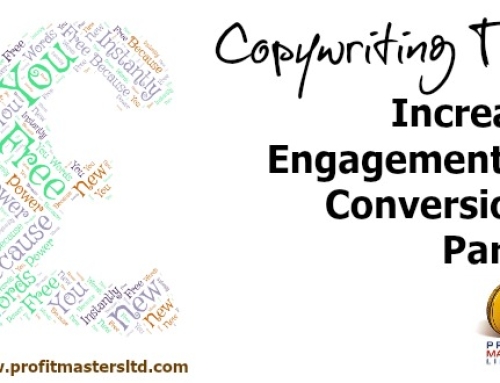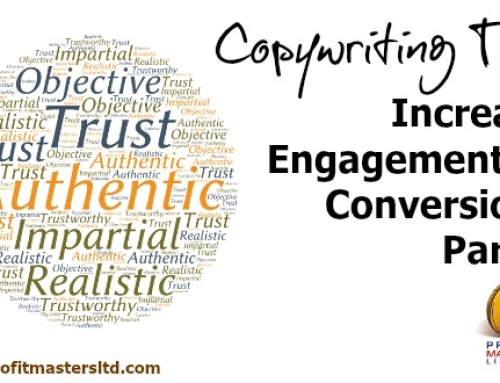As a professional direct response copywriter, I am often asked to critique website copy, sales letters, emails and other marketing materials. It’s often very illuminating, sometimes frustrating and occasionally frightening what some people consider to be good communication to their target audience. No wonder they struggle to attract customers!
With a little help, marketing messages can be transformed from boring, weak, unhelpful copy into clear, interesting, engaging, attraction magnets. In this article, you’ll discover a simple technique to achieve this and improve your overall copywriting skills.
Rather than refer referring to the words you use as mere “copywriting,” let’s add a prefix to this word to describe the intention behind the text. Introducing, drum roll please, “persuasive copywriting.” Now, isn’t that more descriptive, directional and simple to grasp! After all, your marketing should be persuading a targeted prospect that your products or services are the ideal solution to meet their wants and needs.
A good copywriter will use techniques that work and have their roots in behavioural psychology and neuroscience. Let’s discover the psychology behind this copywriting tip.
Part 1 – Make the reader feel something
You’re watching a game of football and your team’s centre forward is flattened from behind by the most ferocious and appalling “studs showing” tackle in the knee, leaving him writhing in agony on the pitch. You know immediately that this is a career-threatening tackle.
Nooooooooo!
As you read the description of the event, how were you feeling? Did you imagine such a tackle and the pain of the centre forward? Did you cringe or wince too? Imagine your reaction if you witnessed this tackle first hand? What would you be feeling and how would you instantly react?
What is happening to you to make you feel this way?
Here’s the science…
This is the power of mirror neurons and how they affect the human mind. A mirror neuron is a neuron in the brain that fires when we act or observe the same action being performed by another. The neuron “mirrors” the behaviour of the other as though the observer were performing the act themselves. In this case, your immediate reaction to witnessing such a horrendous tackle is to almost feel the pain of the player, prior to other emotions taking charge such as anger at the offending player. There are numerous situations when you have witnessed this first hand by watching TV programs e.g. You’ve been framed – I know there are many times I have winced at some of the ‘accident’ style clips they show.
Whilst mirror neurons are considered to be triggered from observation, great copywriters convey strong emotions through words. We research the market to understand the wants and needs of a prospect. However, we go beyond this to understand their concerns, their frustrations, what keeps them awake at night, until we dig deep enough to find the emotions that provide the foundation for their beliefs and consequently actions that follow. Good copy speaks to an emotion, with empathy… it does not intend to create one that isn’t there.
Using this information on mirror neurons to transfer a desired feeling onto your reader is effective. But, it will only work if you know what makes them tick and therefore react in a predictable way. You must know your target audience well.
Rather than write about the features of a product, which is extremely common, why not take a completely unusual approach for once? Yes, you can still write about the benefits too. But, what if you could place yourself in the mind of the potential buyer? What pain, loss, frustration, competitive edge are they feeling because they do not have your product or service? What associated emotions are present when a prospect owns the product or experiences the service? How will they feel now they have the achieved the results they desired?
Has this got you thinking about your marketing?…it should!
Whenever you engage a prospect emotionally, you have the ability to move them towards a buying decision within your sales funnel. Remember, you cannot move an emotion-starved person, however, as soon as you engage with them emotionally, suddenly you are in a considerably stronger position. A good direct response copywriter and/or salesperson will always consider the emotional and the physical aspects of the purchase (note, I didn’t say sale).
As I close this article, I urge you to take a look at your current marketing materials and ask whether they pass the emotions test.
Part Two of this Copywriting Tips series will be available next week, so make sure you check back then, or if you need a reminder, sign up for our newsletter.







Leave A Comment
You must be logged in to post a comment.